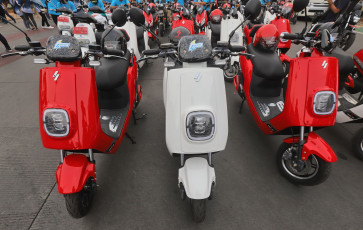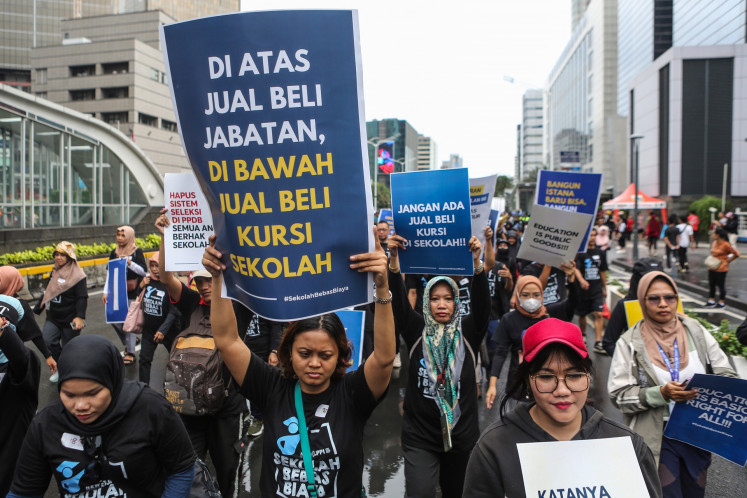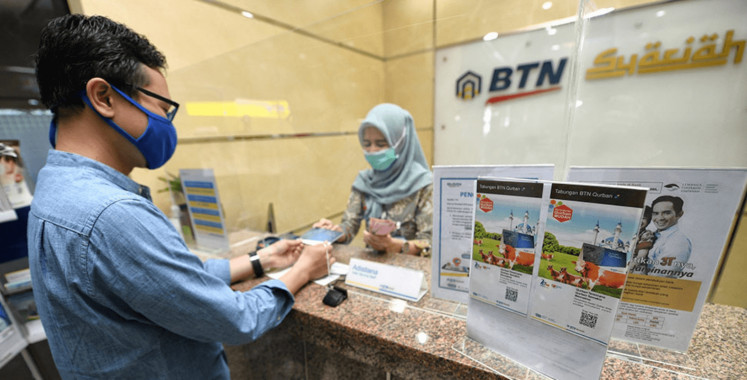Visitors climb Mt. Batur despite warnings
Hundreds of foreign and domestic tourists have climbed Mt
Change text size
Gift Premium Articles
to Anyone

H
undreds of foreign and domestic tourists have climbed Mt. Batur — one of two active volcanoes on Bali — since its activity status was raised to alert following the first of the Mt. Merapi eruptions last week.
Mount Batur and Mount Agung in Bali are two of 19 active volcanoes in Indonesia that have seen their warning levels increase to at least alert since November last year.
After Mt. Merapi, Yogyakarta area, began erupting violently last week, the Volcanology and Mitigation Center in Bandung, West Java, issued a warning against climbing Batur.
I Gede Budi, a member of the Mt. Batur Climbing Guide Association, said around 60 people climbed the mountain every day despite warnings issued by the Bali Volcanology Center.
“One guide usually accompanies a group of four climbers to the peak,” Budi said.
Officials from the Volcanology Center and Museum in Bali carefully monitor the volcano on a minute-by-minute basis, he added.
Mt. Batur is located near the Kintamani resort in Bangli, 63 kilometers northeast of Denpasar. The mountain erupted massively thousands of years ago creating Batur Lake — a topographical feature called a caldera.
Mount Batur erupted 26 times between 1804, when records began, and 2,000. In August 1926 a large eruption wiped out one of the oldest indigenous Balinese communities.
Its longest period of sustained volcanic activity took place between 1963 and 1964, but did not damage the nearby Trunyan village of the Bali Aga community, which has resided on the slopes of the mountain for centuries.
Most climbers, Budi said, were European tourists. “It takes two hours to reach the peak. People usually start climbing at dawn to watch the sunrise from the top of the mountain,” he said.
Agung, one of the monitoring officials at the Volcanology center, said he would provide accurate and up-to-date information on the mountain’s status and warn people not to climb it if its activity increased.









